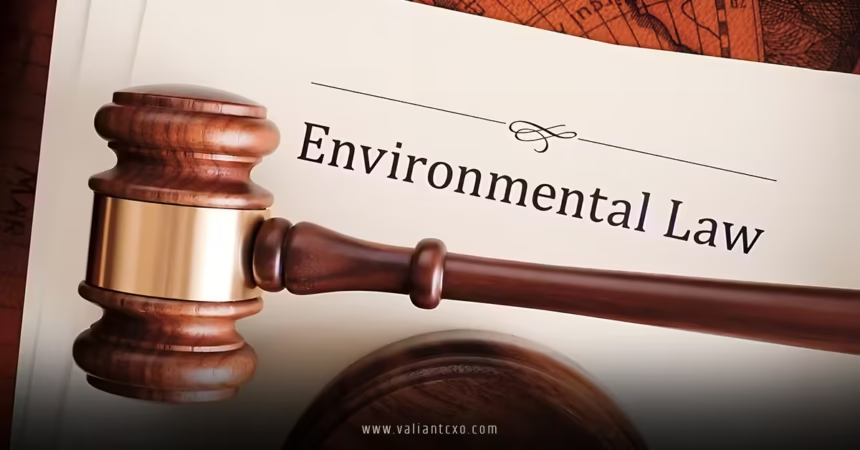Environmental Laws in the US: New Regulations for 2025 are reshaping how we protect our planet, and if you’re curious about what’s changing, you’re in the right place. Picture the environment as a giant, interconnected web—every tweak to the laws is like tightening or loosening a thread, impacting everything from air quality to your local water supply. The year 2025 is a pivotal one, with the U.S. government rolling out bold moves to balance economic growth with environmental protection. But what does this mean for businesses, communities, and everyday folks like you and me? Let’s dive into the details, explore the changes, and figure out why these updates matter.
Why Environmental Laws in the US: New Regulations for 2025 Matter
Imagine you’re building a house, but the ground keeps shifting beneath you. That’s what it’s like trying to keep up with environmental regulations—they’re constantly evolving to address new challenges like climate change, pollution, and resource depletion. Environmental Laws in the US: New Regulations for 2025 are a response to urgent issues, like rising greenhouse gas emissions and the need for cleaner energy. These laws aren’t just bureaucratic red tape; they’re the guardrails that keep industries accountable and ensure our kids inherit a planet that’s still livable.
In 2025, the U.S. is doubling down on its commitment to sustainability while navigating a tricky political landscape. From deregulatory actions to new state-level policies, the changes are a mixed bag—some aim to streamline processes, while others tighten the screws on polluters. Whether you’re a business owner, an environmental enthusiast, or just someone who breathes air and drinks water, these laws will touch your life in some way. So, what’s driving these updates?
The Push for Deregulation and Economic Growth
One of the biggest headlines in Environmental Laws in the US: New Regulations for 2025 is the Environmental Protection Agency’s (EPA) historic deregulatory push. Under Administrator Lee Zeldin, the EPA announced 31 actions to roll back regulations seen as overly restrictive by some industries. Think of it like pruning a tree—cutting back certain rules to let businesses grow while still trying to keep the environmental “tree” healthy. For example, the EPA is reconsidering rules like the Mercury and Air Toxics Standards (MATS) and the Greenhouse Gas Reporting Program, which could ease burdens on coal-fired power plants and energy sectors.
But here’s the catch: deregulation doesn’t mean a free-for-all. The EPA still has to enforce cornerstone laws like the Clean Air Act and Clean Water Act. These laws, administered by the EPA, set the baseline for protecting air and water quality. The 2025 changes aim to give states more power to make decisions, which could mean faster approvals for projects like energy plants or manufacturing facilities. But will this flexibility come at the cost of environmental health? That’s the question keeping environmentalists up at night.
The National Environmental Policy Act (NEPA) Shake-Up
Another major shift in Environmental Laws in the US: New Regulations for 2025 is the overhaul of the National Environmental Policy Act (NEPA). NEPA is like the environmental referee for federal projects—it ensures things like highways, pipelines, or airports don’t wreck ecosystems without a thorough review. In 2025, the Council on Environmental Quality (CEQ) is removing its NEPA regulations from the Code of Federal Regulations, effective April 11, 2025. This move, paired with the Department of Energy’s (DOE) revisions to its NEPA procedures, is meant to speed up project approvals.
Why does this matter? Well, imagine you’re planning a cross-country road trip, but every few miles, you have to stop and fill out paperwork. That’s what NEPA can feel like for developers. By streamlining or removing some of these steps, the government hopes to boost infrastructure projects. But critics worry this could sideline environmental reviews, potentially harming sensitive habitats. The public has until March 27, 2025, to comment on these changes, so there’s still time to weigh in.
Key Changes in Environmental Laws in the US: New Regulations for 2025
Let’s break down some of the specific updates in Environmental Laws in the US: New Regulations for 2025. These changes span air, water, waste, and energy, and they’re designed to address both environmental protection and economic priorities. Here’s what’s on the horizon.
Air Quality and Emissions: Reconsidering Old Rules
Air quality is a big focus in Environmental Laws in the US: New Regulations for 2025. The EPA is rethinking rules like the “Good Neighbor Plan,” which aimed to reduce cross-state air pollution. The Biden-era version of this plan expanded federal oversight, but the 2025 revisions might dial that back, giving states more control. Similarly, the reconsideration of the 2009 Endangerment Finding—where greenhouse gases were officially labeled pollutants—could reshape how the EPA regulates emissions from vehicles and power plants.
What’s the real-world impact? Cleaner air reduces health issues like asthma, but loosening regulations could mean more pollution in some areas. It’s like choosing between a quick sprint and a marathon—deregulation might get you short-term economic wins, but long-term health and environmental costs could pile up.
Water Quality and PFAS Regulations
Water is life, and Environmental Laws in the US: New Regulations for 2025 are zeroing in on keeping it clean. States like Rhode Island and Vermont are cracking down on per- and polyfluoroalkyl substances (PFAS), those “forever chemicals” that linger in water and soil. Rhode Island’s Consumer PFAS Ban Act, effective January 1, 2027, bans PFAS in products, while Vermont’s laws regulate PFAS in cosmetics and textiles. These state-level moves complement federal efforts, like the EPA’s push to set enforceable PFAS limits in drinking water by September 2024.
Why the fuss over PFAS? These chemicals are like uninvited guests who never leave—they stick around in the environment and our bodies, potentially causing health issues. By tightening regulations, states and the EPA are trying to lock the door on PFAS pollution. If you’re a business dealing with manufacturing or waste, these rules could mean new compliance costs, but they’re a win for public health.
Waste Management and Circular Economy
Waste management is getting a makeover in Environmental Laws in the US: New Regulations for 2025. The Producer Responsibility Obligations (Packaging and Packaging Waste) Regulations 2024, effective January 1, 2025, consolidate packaging rules and push for a circular economy. This means companies must take more responsibility for their waste, like ensuring packaging is recyclable or reusable. It’s like telling a chef they have to clean up their kitchen after cooking—not just leave the mess for someone else.
The federal government is also encouraging states to adopt circular economy strategies. For example, the UK’s Circular Economy Taskforce (while not U.S.-specific, it’s influencing global trends) is inspiring policies that prioritize recycling and waste reduction. In the U.S., states like California are leading the charge with laws like Senate Bill 219, which extends deadlines for climate reporting but keeps the pressure on companies to track emissions.
Renewable Energy and Infrastructure
Renewable energy is a bright spot in Environmental Laws in the US: New Regulations for 2025. Policies are encouraging wind, solar, and battery storage projects with incentives and streamlined permitting. Think of it like giving renewable energy a fast-pass lane at an amusement park—faster approvals mean more clean energy projects can get off the ground. The Inflation Reduction Act of 2022 continues to fuel these efforts with tax credits and grants, even as some federal regulations are scaled back.
At the state level, places like Colorado are passing laws to support outdoor preschool programs and green infrastructure, tying environmental protection to education and community resilience. These initiatives show that Environmental Laws in the US: New Regulations for 2025 aren’t just about restrictions—they’re about building a sustainable future.
State-Level Innovations in Environmental Laws in the US: New Regulations for 2025
While federal changes grab headlines, states are making waves too. Environmental Laws in the US: New Regulations for 2025 include bold moves from California, Rhode Island, and beyond. Let’s explore how states are stepping up.
California’s Climate Accountability Push
California is often the trailblazer in environmental policy, and 2025 is no different. Senate Bill 219 gives the California Air Resources Board (CARB) until July 1, 2025, to finalize rules for the Climate Corporate Data Accountability Act. This law requires companies to report their greenhouse gas emissions, making transparency a legal must. It’s like shining a spotlight on corporate polluters—no more hiding in the shadows.
California’s also tweaking its landmark California Environmental Quality Act (CEQA). In 2025, new laws will ease CEQA requirements for housing projects, aiming to address the state’s housing crisis. But environmentalists worry this could weaken protections for ecosystems. It’s a classic tug-of-war between development and conservation.
Other States Leading the Charge
Beyond California, states like New Jersey and Minnesota are pushing their own Environmental Laws in the US: New Regulations for 2025. New Jersey’s Department of Environmental Protection is studying PFAS regulation, while Minnesota’s allocating millions for conservation and PFAS research. These state-level efforts show that even if federal policies shift, states can keep the environmental ball rolling.
Challenges and Controversies
Not everyone’s cheering for Environmental Laws in the US: New Regulations for 2025. Some industries argue that deregulation doesn’t go far enough, while environmental groups warn that rolling back rules could lead to more pollution. The EPA’s plan to reconsider the Endangerment Finding, for instance, has sparked fierce debate. Critics like the Environmental Defense Fund say it could “create chaos” by undermining decades of climate progress.
Then there’s the NEPA rollback. While it might speed up projects, it could also mean less scrutiny for developments that impact wetlands or wildlife. It’s like skipping the safety inspection on a car—sure, you get on the road faster, but what happens if the brakes fail?
How Businesses and Individuals Can Adapt
So, how do you navigate Environmental Laws in the US: New Regulations for 2025? For businesses, it’s about staying proactive. If you’re in manufacturing, energy, or construction, start reviewing compliance requirements now. Invest in sustainable practices—like recycling programs or low-emission tech—to stay ahead of the curve. For individuals, small actions count. Support local conservation efforts, reduce waste, and stay informed about public comment periods for new regulations.
Want to dive deeper? Check out resources from trusted organizations like the EPA for federal updates, Lewis & Clark Law School for educational insights, or the National Caucus of Environmental Legislators for state-level trends.
Conclusion
Environmental Laws in the US: New Regulations for 2025 are a complex mix of deregulation, state innovation, and renewed focus on sustainability. From the EPA’s bold moves to state-level PFAS bans and renewable energy incentives, these changes are reshaping how we protect our planet. They’re not perfect—some spark hope, others controversy—but they’re a chance to rethink our relationship with the environment. Whether you’re a business owner, a policymaker, or just someone who cares about clean air and water, now’s the time to engage. Stay informed, get involved, and let’s make sure 2025 is a step toward a greener, healthier future.
FAQs
1. What are the main goals of Environmental Laws in the US: New Regulations for 2025?
The main goals include balancing environmental protection with economic growth, streamlining project approvals, and addressing issues like PFAS pollution and emissions. These laws aim to make industries accountable while encouraging sustainable practices.
2. How do Environmental Laws in the US: New Regulations for 2025 affect businesses?
Businesses may face new compliance costs, especially for waste management and emissions reporting. However, deregulation in some areas could reduce red tape, making it easier to launch projects.
3. Why is NEPA changing in Environmental Laws in the US: New Regulations for 2025?
NEPA’s changes aim to speed up federal project approvals by removing some regulatory steps. This could boost infrastructure but raises concerns about environmental oversight.
4. How are states contributing to Environmental Laws in the US: New Regulations for 2025?
States like California, Rhode Island, and Minnesota are passing laws to regulate PFAS, promote renewable energy, and enhance climate accountability, often filling gaps left by federal policies.
5. Can individuals influence Environmental Laws in the US: New Regulations for 2025?
Yes! Public comment periods, like the one for NEPA changes (open until March 27, 2025), let individuals share their views. Supporting conservation efforts and reducing personal waste also helps.
For More Updates !! : valiantcxo.com


